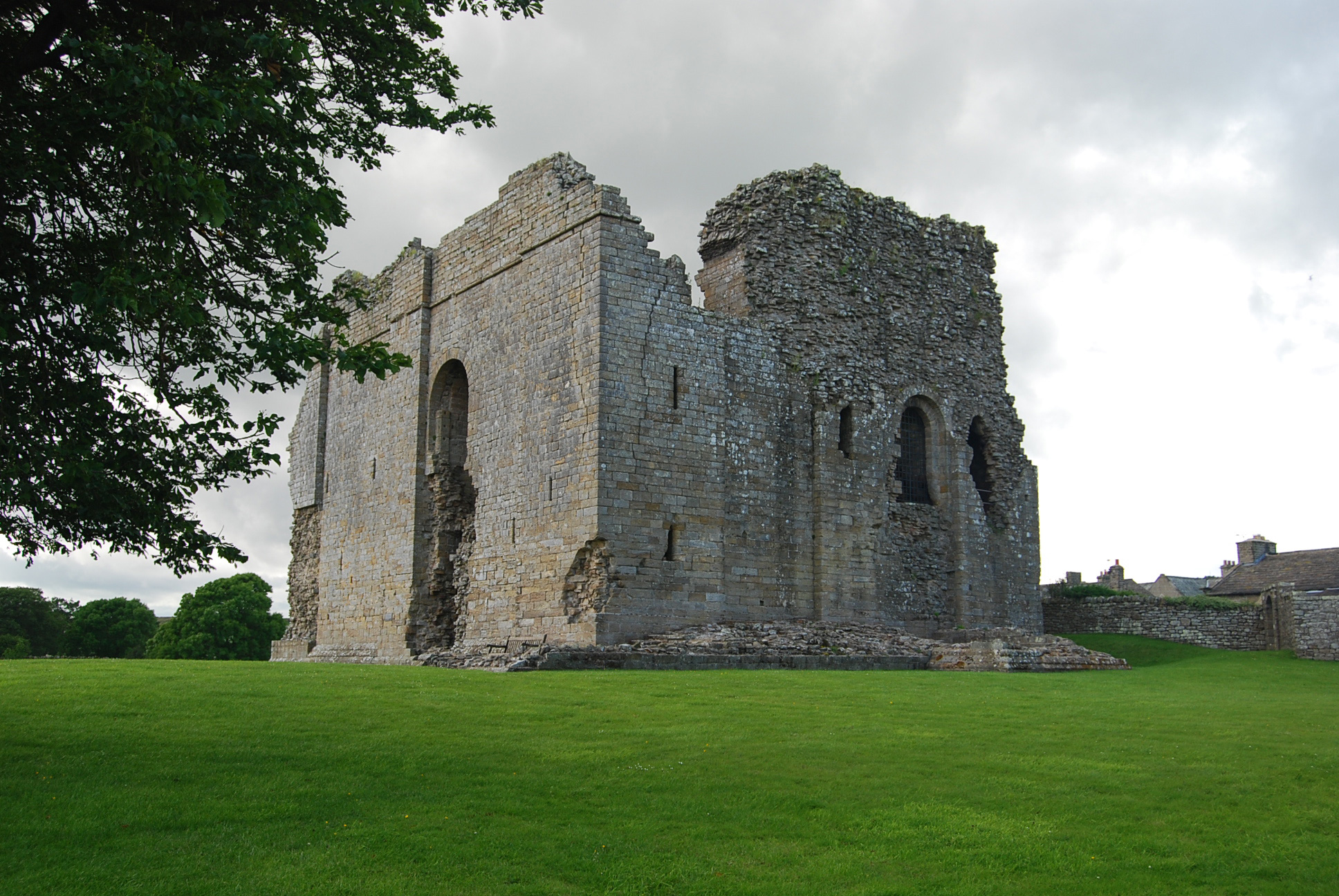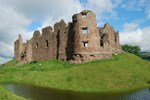History
Bowes Castle was originally a timber structure built around 1136 by Alan de Bretagne, the Count of Brittany and 1st Earl of Richmond. It is located within the former site of the Roman Fort of Lavatrae in County Durham, England. The location of the northwest corner of the Roman Fort of Lavatrae was chosen for the castle due to its strategic location along the Stainmore Pass in northern England. The castle passed to Alan's son, Conan the Little, Earl of Richmond, in 1146. Upon Conan's death a quarter of a century later, in 1171, the castle passed to the English Crown.

King Henry II fortified the castle, including constructing a stone keep between 1171 to 1187. During this time the Scots attacked the castle in 1173 during the Great Revolt of 1173-1174. In 1174, money was spent on repairs and building bulwarks surrounding the keep. The extra defensive measures were added to protect against anticipated future invasions by King William the Lion of Scotland. William did besiege the castle again in 1174, but was forced to retreat when a relief force arrived, led by Geoffrey, the Archbishop of York and illegitimate son of King Henry II.
After the death of King Henry II and his son, Richard the Lionheart, in 1189 and 1199, respectively, ownership of Bowes Castle reverted to Henry's other son, King John, in 1199. Only four years later, in 1203, he granted custody of the castle to Robert de Vieuxpont, who held it until 1228. John stayed at Bowes Castle in 1206 en route to Carlisle and again in 1213. The castle was briefly used to hold Eleanor of Brittany, King John's niece, who was placed in the custody of Vieuxpont. In 1241, Bowes Castle was bestowed upon Peter of Savoy when he became Earl of Richmond. The castle remained in the hands of the Earls of Richmond until 1322 when King Edward II passed it to John de Scargill.
Thereafter, rebels attacked the castle, set fire to part of the hall, and looted items, including armor and springalds, devices for projecting large bolts or stones. Conflicts with Scotland led to further raids of the castle, eventually leaving the structure in ruins by 1340.
Following John de Scargill's death in 1361, Bowes Castle was reclaimed by the Crown and eventually granted to the Neville Family in 1444. They retained possession of the castle until 1471, when it once again reverted to the English Crown. King James I sold the castle in the early 17th century. During the mid-17th century, much of Bowes Castle was dismantled, and the stone was reused for other buildings due to the English Civil War.
Today, Bowes Castle is controlled by English Heritage, which cares for more than 400 historical monuments and buildings.
Castle Highlights
Bowes Castle is free to enter during daylight hours, with parking available in the village of Bowes. Despite the ruinous state of the structure, as only the keep remains, it is worth a visit. Originally three stories tall, it still represents a foreboding sight. A modern staircase inside the castle enables visitors to go up one level to the first floor.
The former Roman fort, which the castle was built atop, can still be visually traced along most of its perimeter as outlined by earthworks and ditches. Bowes Castle can be explored thoroughly in about an hour. I recommend visiting Barnard Castle, just a few miles away, for a full day of castle touring.
Bowes Castle is also haunted.






